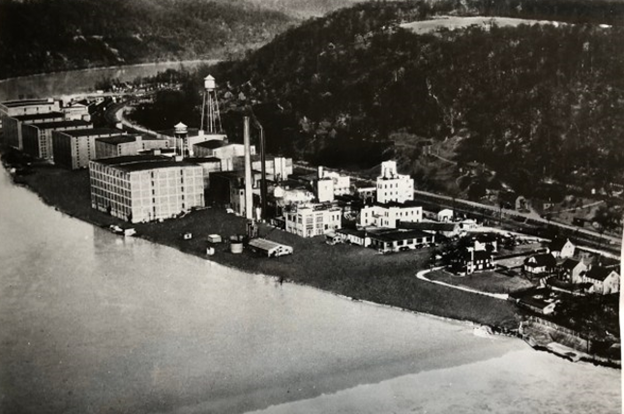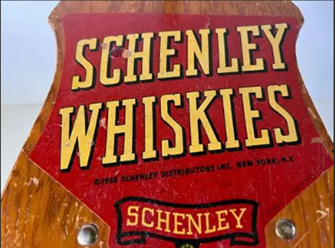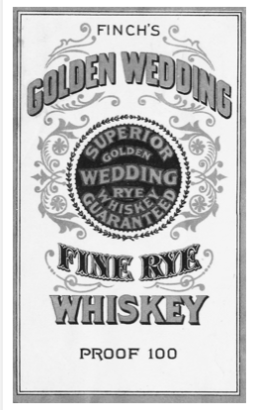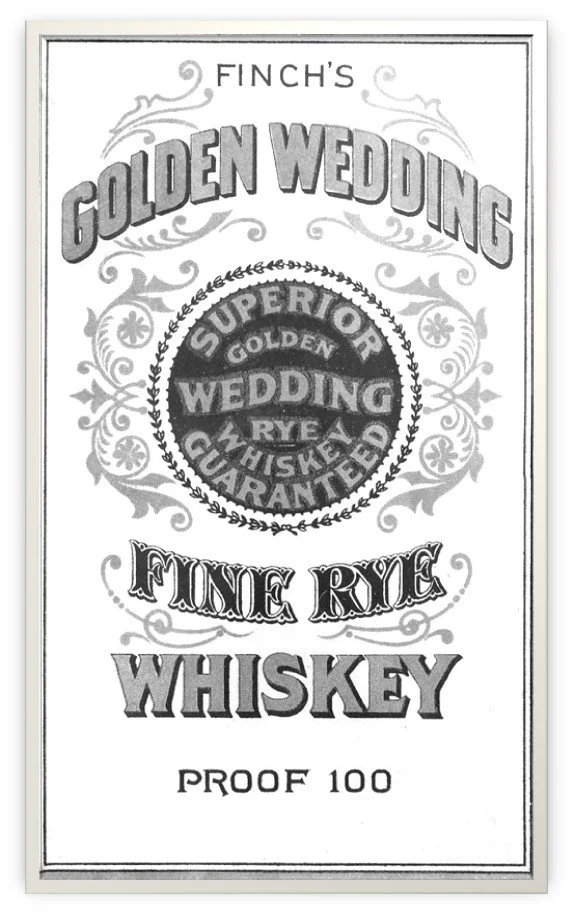Joseph S. Finch
There are no actual photographs of Joseph S. Finch in existence. Above is an AI-generated image of Finch based on details known about his life.
The man who founded and gave his name to the distilling dynasty was Joseph Finch, born in 1839 and raised in Pennsylvania. Little is known of his early life but at 20 he married Elizabeth J. Moore, whose father, Thomas Moore, owned a distillery in Allegheny County in western Pennsylvania he called ”Possum Hollow.” This was Finch’s introduction to the distilling industry. Finch went to work for Moore, probably at a second distillery the father-in-law had built on First Avenue in Pittsburgh. Moore is recorded as having operated it for several years and then turned it over to a son-in-law, mostly likely Finch.
Around 1864 Finch decided to go it alone, establishing a small distillery in Pittsburgh. The modest operation was capable of mashing 100 bushels of grain daily. Involved in both distilling and selling the whiskey, Finch ran it essentially as a one-man operation. Three years later, however, an expanding business caused him in 1867 to add a partner, John W. Painter. Painter was born in Westmoreland County, Pennsylvania, in 1839, the same year as Finch. Painter’s parents were wealthy enough to send him to college in Ohio.
The partnership of Finch and Painter continued to prosper until 1884 when Joseph Finch, at the early age of 44, died. He was buried in Allegheny Cemetery near Pittsburgh. Interred next to him was his wife Elizabeth who had died in 1877. She was only 37 at her death.
The Finch Distillery applied for a medicinal whiskey permit during Prohibition. In the 1920s, Louis Rosenstiel absorbed Finch’s distillery, merging it with Schenley Distillers (once the nation’s largest whiskey producer from 1933-1937). Post-1933 repeal, Schenley became one of the "Big Four" whiskey producers, controlling nearly 16% of U.S. whiskey volumes. Finch was a key player in Pennsylvania's rye renaissance, with vast barrels and national influence.
Golden Wedding Rye: under Finch & Painter, production shot up to ~4,000 gallons a day, with warehouse space for 60,000 barrels. Their flagship rye, Golden Wedding, gained national attention, even shipping to NYC bartenders like Jerry Thomas.
Growth & Infrastructure: in 1868 they relocated to a robust brick plant on McKean Street by the Monongahela River—designed “for the ages,” built with thick walls and sturdy beams.
Prohibition & Consolidation Medicinal Whiskey License: as prohibition encroached, Joseph S. Finch wisely applied for a medicinal whiskey permit—one of only six around Pittsburgh.
Louis Rosenstiel & Schenley: in the 1920s, Rosenstiel absorbed Finch’s distillery and its stock, merging it with Schenley distillers. The Schenley plant in “Schenley/Aladdin” became the new powerhouse, rebranded under the Finch name due to its medicinal license.
Scale & Influence: post-1933 repeal, Schenley was among the “big four” whiskey producers, controlling nearly 16% of us whiskey volumes. The Finch/Schenley facility in Pennsylvania was a central hub for melding rye into blended whiskies.
Decline & Closure (late 1960s) Peak to Decline: once the nation’s largest whiskey producer (1933–1937), Schenley gradually sold off Pennsylvania facilities.
Closure: in 1968, after Rosenstiel’s departure, Glen Alden Corporation began liquidating. The distillery was shuttered, buildings sold or demolished—the site today reveals only foundations.
Legacy, Namesakes & Revival of Golden Wedding Echo: the original Golden Wedding Rye still echoes in spirits history, though later production shifted—some whiskey moved to Canada.
Collector’s Bourbon: In 1997, United Distillers (later Diageo) launched a “Rare Bourbon” series, including a 15‑year Joseph Finch bourbon bottled in Kentucky at Stitzel-Weller—not linked to Pennsylvania’s distillery only 2,400 bottles were released. now prized rarities (often $5–6k).
Modern Tribute: The old distillery site (129 McKean St) in Pittsburgh is being redeveloped as the distillery at south shore, aiming to blend craft distilling, dining, retail, and riverfront appeal.
Little-known Facts: Name, Brand & Plant Shifting: The Schenley site was known as Aladdin, PA—visible on Golden Wedding bottles—though the name refers to a warehouse rather than a town.
Medicinal License Advantage: The Finch distillery’s survival during prohibition hinged on that coveted medicinal spirits permit—making it invaluable to Rosenstiel’s empire.
Family Roots in Rye: Finch’s connection to predecessor Thomas Moore (Old Possum Hollow) cemented his place in Pennsylvania’s rye legacy.
Distinct Identity Lost: the 1997 Joseph Finch Bourbon—despite its name—had zero physical connection to the original distillery. It was distilled in Kentucky and bottled at Stitzel-Weller.
Contributed by: Rob Morton, Baltimore, Maryland









